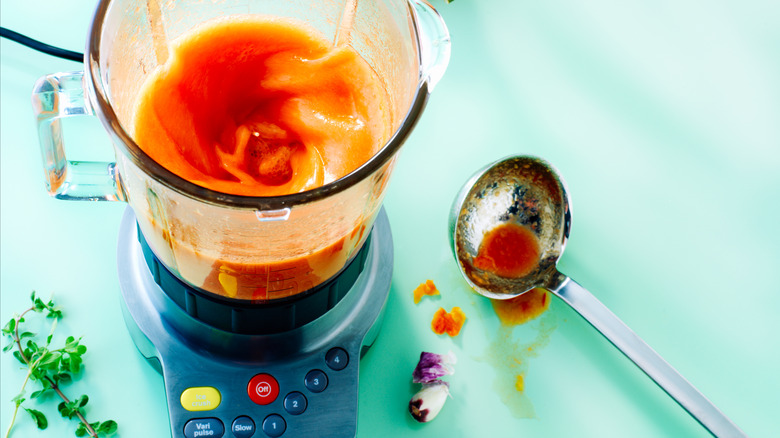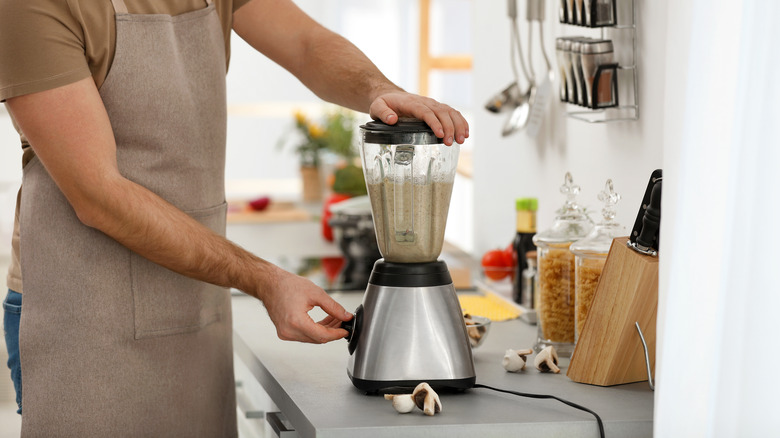The Reason You Shouldn't Put Hot Liquid In A Blender
Blenders are truly a marvel of an addition to our collection of countertop kitchen appliances, whipping up smoothies, homemade nut milks, and smooth sauces with ease. Along with the food processor, the stand mixer, the Instant Pot, and the air fryer, to name a few, the blender — especially high-powered versions like the Vitamix – makes our day-to-day cooking tasks a whole lot quicker and easier.
The invention of the blender is credited to Stephen Poplawski, of the Stevens Electric Company, who decided in 1922 to put a motorized blade at the bottom of a container in order to mix up malts and milkshakes, which were all the rage at the time (via SoftSchools). Improvements by other inventors brought the Waring-made Miracle Mixer blender to market in 1937, retailing for $29.75 (about $586 in today's dollars, according to CPI Inflation Calculator). Luckily, today's blenders are a lot more affordable — and are an indispensable tool. But whatever you use your blender for, don't put hot liquid in it without taking adequate precautions.
Hot liquid can create a dangerous explosion
We all love using our blenders to whip up icy smoothies – but what about hot foods? Many recipes call for blending hot liquids, such as those for creamy soups. But did you know that adding hot liquid to a blender can create a dangerous explosion? As explained by Kitchen Parade, this builds up pressure inside the blender jar that can be enough to blow off the lid and create a mess all over your kitchen — and risks burning whoever's doing the blending.
So how do you safely blend your hot soups to perfection? Kitchen Parade suggests letting whatever you're blending cool down a little first. But if you're loading straight into the blender, fill the container no more than halfway, and work in batches to blend, which will greatly reduce the risk of explosion. Place the lid firmly on the blender jar and drape a towel over it, holding the towel down as you run the blender on the lowest setting and gradually increase — advice we shared in our recipe for cream of asparagus soup. If you do feel any pressure building under the blender lid, Kitchen Parade suggests gently "burping" the lid by cracking it a little and letting out any accumulated steam. And if you've got an immersion blender, all the better: Cuisine At Home notes this is the safest method for blending hot soups — plus you won't have an extra dirty dish to wash.

